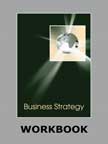CEMEX's Acquisition Strategy - The Acquisition of Rinker Group |
ICMR HOME | Case Studies Collection
» Business Strategy Case Studies Please note: This case study was compiled from published sources, and is intended to be used as a basis for class discussion. It is not intended to illustrate either effective or ineffective handling of a management situation. Nor is it a primary information source. |
||||||||||||||||||||||||||||||||||||||||||||||
Abstract:
Acquiring Rinker strengthened the operations of CEMEX in the US. However, since late 2007, the real estate market in the US faced a slowdown. The prices in real estate markets started falling, unemployment increased and several financial institutions went bankrupt. These events led to poor demand for building materials and tighter credit availability from banks. CEMEX could not generate enough cash flows in 2008 and 2009 because of fall in sales. At the same time, it had to refinance its short term debt at several instances leading to increase in cost of financing. Rating agencies downgraded CEMEX's credit rating leading to increase in cost of capital. CEMEX had to sell some of its assets, some acquired through Rinker's acquisition to raise funds and pay off debts. Though selling certain operations resulted in lower cash flows than estimated, CEMEX remained bullish on the long term prospects of the US economy and was confident that it would bounce back strongly. Issues:
Contents:
Keywords:CEMEX, Rinker, Post-Merger Integration, Global Cement Industry, Subprime Crisis, Leverage, Debt Credit Rating, Acquisition Integration Process, Capital Structure, CEMEX Way, Internal Benchmarking Process, Global Cement Industry, Geographical Diversification, Free Cash Flow Method, US Cement Industry, Macroeconomic Environment, Ordinary Participatory Notes, Financial Statements CEMEX's Acquisition Strategy - The Acquisition of Rinker Group- Next Page>>
Case Studies Links:-
Case Studies,
Short Case Studies,
Simplified Case Studies. | |||||||||||||||||||||||||||||||||||||||||||||||


